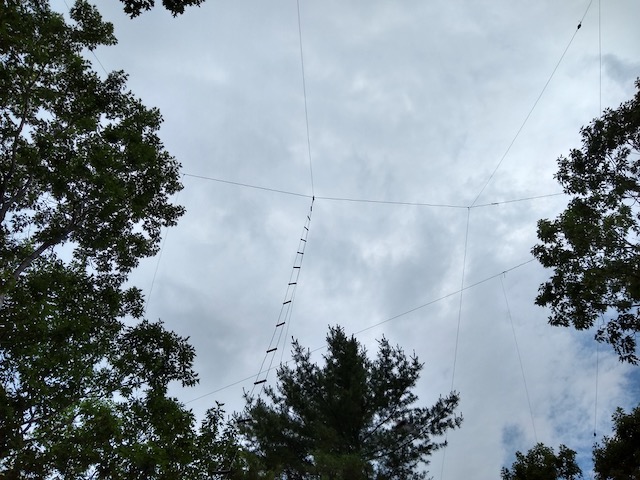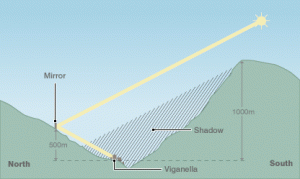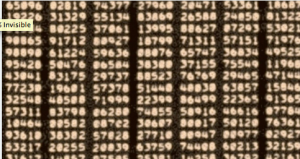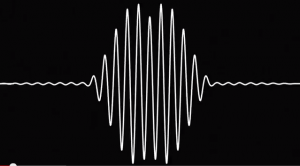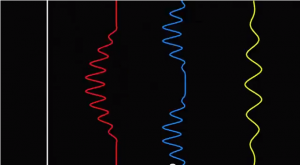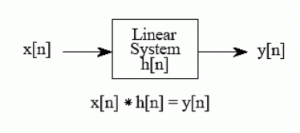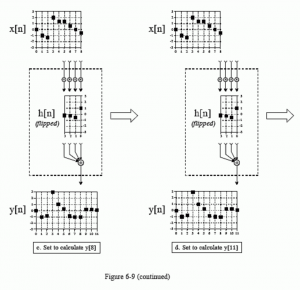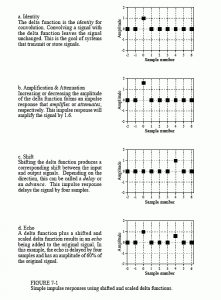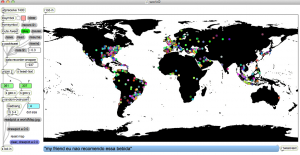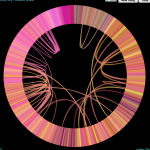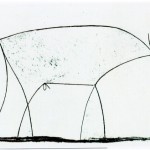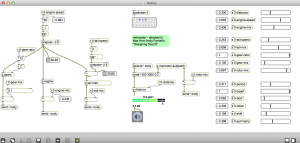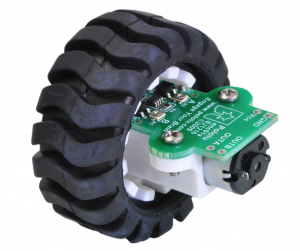Earth, air, fire, and water
Waves that are not sound waves.
Experiments
Transmitting music with light
light: https://reactivemusic.net/?p=8487
- Laser light at 650nM
- What wavelength goes with a color? http://science-edu.larc.nasa.gov/EDDOCS/Wavelengths_for_Colors.html
- Frequency of red light is 4.6 * 10e14 = 300,000,000 / .000000650 (460 THz)
Analog radio/TV transmitters
A simple Arduino AM transmitter (Morse code) https://reactivemusic.net/?p=4450 (antenna pin D8) on 1.337 MHz
Raspberry Pi-rate radio. FM stereo transmitter using R-Pi and a piece of wire: http://makezine.com/projects/make-38-cameras-and-av/raspberry-pirate-radio/ Also see: https://reactivemusic.net/?p=10186
Analog TV transmitters, using RF Modulators and Old VCR’s: https://reactivemusic.net/?p=12355
Software defined Radio (SDR)
using Max and Pd
rtl-sdr – inexpensive open source software defined radio
- information http://sdr.osmocom.org/trac/wiki/rtl-sdr
- Where to buy one: http://www.nooelec.com/store/sdr/sdr-receivers/tv28tv2-sdr-dvb-t-usb-stick-set.html#.U2BX1K1dVKk
- installation https://reactivemusic.net/?p=8360
- sub-reddit http://sl.reddit.com/r/RTLSDR/
- Max and Pd externals https://github.com/tkzic/pd-rtlsdr
Software defined radio in Max http://zerokidz.com/radio (The user guide http://zerokidz.com/radio/docs/maxsdr5.pdf and tutorials provide a basic introduction to working with radio signals in the audio domain.
Transmitting sound in water
Transmitting signals in water https://reactivemusic.net/?p=853
Internet radio streams and recordings
- Roman Mars: Numbers Stations: http://99percentinvisible.org/episode/numbers-stations/
- You are listening to: http://youarelistening.to/boston
- broadcastify: http://www.broadcastify.com/listen/feed/15433/web
- the listening post: http://www.chilton.com/scripts/radio/R8-receiver
- Very Low Frequency: http://www-pw.physics.uiowa.edu/mcgreevy/
- The noise floor: Noise Floor: Exploring the world of unintentional radio emissions by Melissa Elliott: http://www.youtube.com/watch?v=5N1C3WB8c0o
- NASA on Souncloud: https://reactivemusic.net/?p=17377
ideas
- What is the difference between sound waves and radio waves?
- What is an antenna?
- Wave propagation is frequency dependent
- Sunspots and magnetic fields http://spaceweather.com
- Extreme frequencies, negative frequencies?
The speed of sound is 340 m/s in air (1497 m/s in water)
Speed of light is 300,000,000 m/s
wavelength = velocity / frequency
“I think [radio] is just the biggest conceptual art project uninentional or otherwise that anyone ever made. it puts Christo and those other guys to shame. Its planetary”
Roman Mars “Episode 97 – Numbers Stations” from 99% Invisible
Frequencies and modes
- Macbook trackpad: Noise 5 mHz. (try holding radio near screen too)
- Macbook AC adapter: Noise 600-1400 kHz. (~1000)
- AC adapters, LED’s, Utility poles: 3.2 Khz
- Arduino transmitter: AM 1330 kHz.
- Laser light at 650nM
- What wavelength goes with a color? http://science-edu.larc.nasa.gov/EDDOCS/Wavelengths_for_Colors.html
- Frequency of red light is 4.6 * 10e14 = 300,000,000 / .000000650 (460 THz)
- Wireless micorophone (Orange-brown): Wide FM 614.150 MHz. (R band)
- Cordless phone: Narrow FM 926 mHz.
- Cell phone: Digitally encrypted trunking FM 836 mHz.
- Wifi: Digitally encoded PCM 2.4 gHz.
- FM broadcast band: Wide FM 89.7 mHz (Raspberry Pi example 98.1 Mhz)
- TV audio 600 mhz/660 mhz FMW
- The sun http://www.ips.gov.au/Solar/3/4
Looking for more…
This blog has many stories about experiments waves. Try searching, for example, for: “radio” https://reactivemusic.net/?s=radio
Assignment
Please send me copies of your earlier compositions. [email protected]
- the future
- a sound byte
- internet API data (extra credit)
- magical fx
Note: if you played the music in class but lost the recording, Max patch – or if it was a live performance – just let me know, in case I have forgotten. Thanks.
Here is a description of the composition for next week:
Write a composition to induce magical effects.
Here is an example from Aseem Suri http://www.aseemsuri.com/journal/piece-of-mind-second-run-at-the-csound-conference
The project was derived from computer technology, but the overall effect was that people would go into a mysterious room, for a minute, and when they emerged, they would be smiling and happy.
Due on December 15th (last class)
